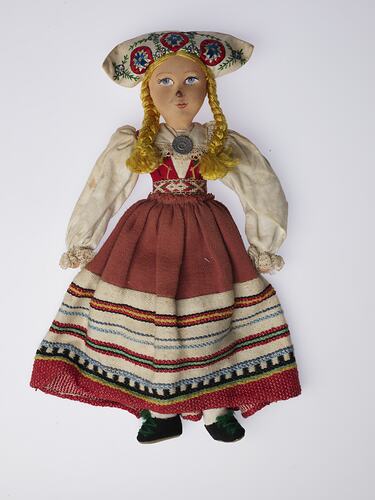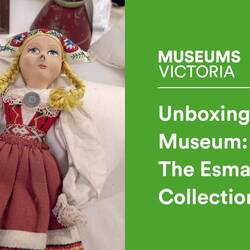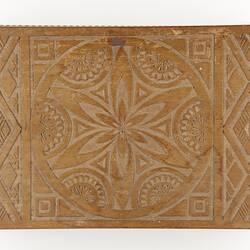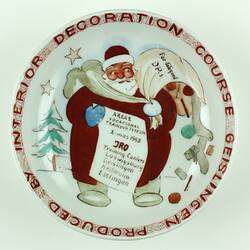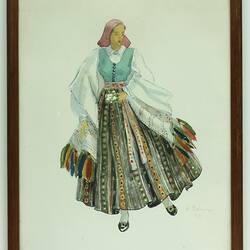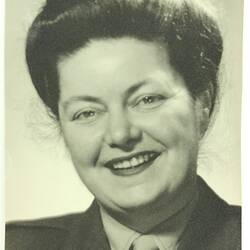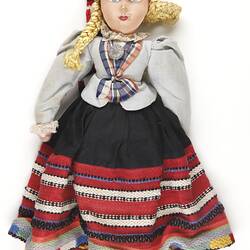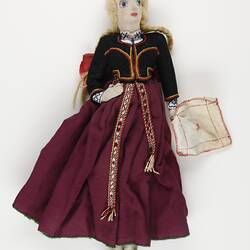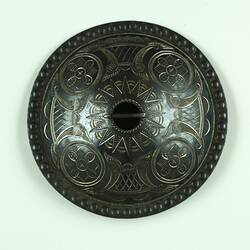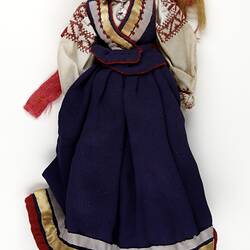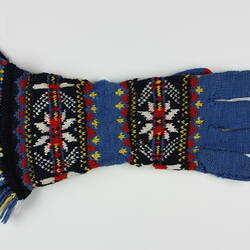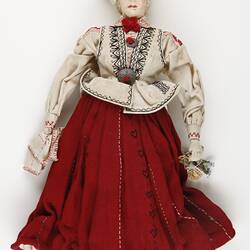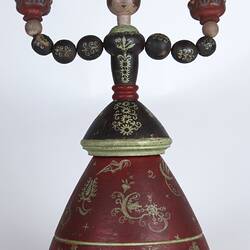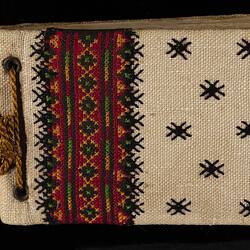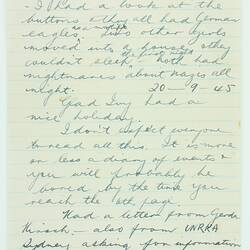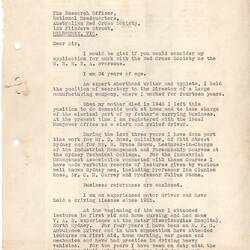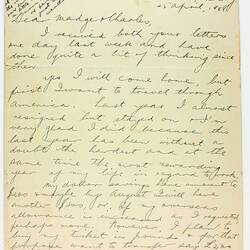Summary
The Esma Banner Collection is composed of more than 1000 objects, documents and photographs depicting her experiences in Germany.
In 2012 Museum Victoria acquired a collection of items related to Esma Banner, an Australian employee with the United Nations who assisted with post-war relief at displaced persons centres in Germany at the end of World War II. This collection of objects, documents, archival material, negatives and photographs was donated by Esma Banner's niece Helen Fitzgerald.
Displaced persons camps were initially created by Allied and Soviet forces as temporary processing centres for people displaced during the War. However, the camps soon became long term sites of accommodation, employment, education and recreation for those who could not, or did not want to be repatriated to their countries of origin. The United Nations Relief and Rehabilitation Administration (UNRRA) assumed administrative responsibility of the camps in October 1945 before UNRRA was replaced by the International Refugee Organization (IRO) in 1947. These organisations were responsible for post-war relief as well as the repatriation and resettlement of an estimated eleven million displaced persons in Europe (Reinisch, J. 2008).
The items in this collection primarily cover the period from 1944 to 1951 and represent Esma's personal and professional experiences with UNRRA and the IRO during this time. Esma held a number of posts in Germany including the positions of Welfare Officer and Employment Officer (Banner, Personal Letters, 1945-51). This collection documents a rarely told story in post-war immigration narratives - that from the perspective of an Australian migration worker. The Esma Banner Collection is a significant addition to the Museum's existing collection as it provides information regarding migration employees, their working life, and how they were involved with post-war resettlement and immigration policies (Banner, Personal Letters, 1945-51, see Cohen, 2008; Reinisch, 2008; Grossman, 2011 and Markus, 1984.)
In addition, the collection provides contextual information beyond official and professional documentation. The personal experiences of Esma Banner and those with whom she worked are described in her letters, diaries and scrapbooks that detail her daily life, the organisations that she worked for, her occupations and the resettlement process. The collection also includes a variety of resources dealing implicitly with the experiences of the displaced persons, many of whom later settled in Allied countries, including Australia. It reveals the daily experiences and reflections of displaced persons in the camps, including the ways in which national and cultural traditions of these groups were lost, found and renegotiated in this environment.
The Esma Banner Collection is composed of more than 1000 objects, documents and photographs depicting her experiences in Germany. There are approximately 120 letters that Esma sent to her family and friends in Australia, as well as two personal diaries describing her experiences. There is an extended series of official documents relating to her employment with the United Nations, and a collection of objects handcrafted by displaced persons. Additionally, this collection contains several hundred photographs, glass slides and negatives taken by Esma during her time overseas. After World War II hundreds of thousands of homeless, stateless or displaced people lived in camps before resettling in Western countries including Australia (Reinisch, 2008). This collection retains ongoing cultural relevance to these large migrant communities across Victoria and Australia. With the population of post-war displaced persons' survivors aging, the collection contributes to preserving their stories and experiences as part of a greater Australian migration narrative.
References
Cohen, D. 2008, Between Relief and Politics: Refugee Humanitarianism in Occupied Germany 1945 - 1946, Journal of Contemporary History, vol. 43, no. 3, pp. 437 - 449. Grossmann, A. 2011, Grams, Calories, and Food: Languages of Victimisation, Entitlement, and Human Rights in Occupied Germany, 1945 - 1949, Central European History, vo. 44, no. 1, pp. 118 - 148. International Refugee Organization, 1950, IRO, Social Service Review, vol. 23, no. 3, pp. 389 - 390 Markus, A. 1984, Labour and Immigration 1946-9: The Displaced Persons Program, Labour History, No. 47, pp. 73 - 90. Reinisch, J. 2008, Introduction: Relief in the Aftermath of War, Journal of Contemporary History, Vol. 43, No. 3, pp. 371-404.
More Information
-
Keywords
-
Authors
-
Article types
